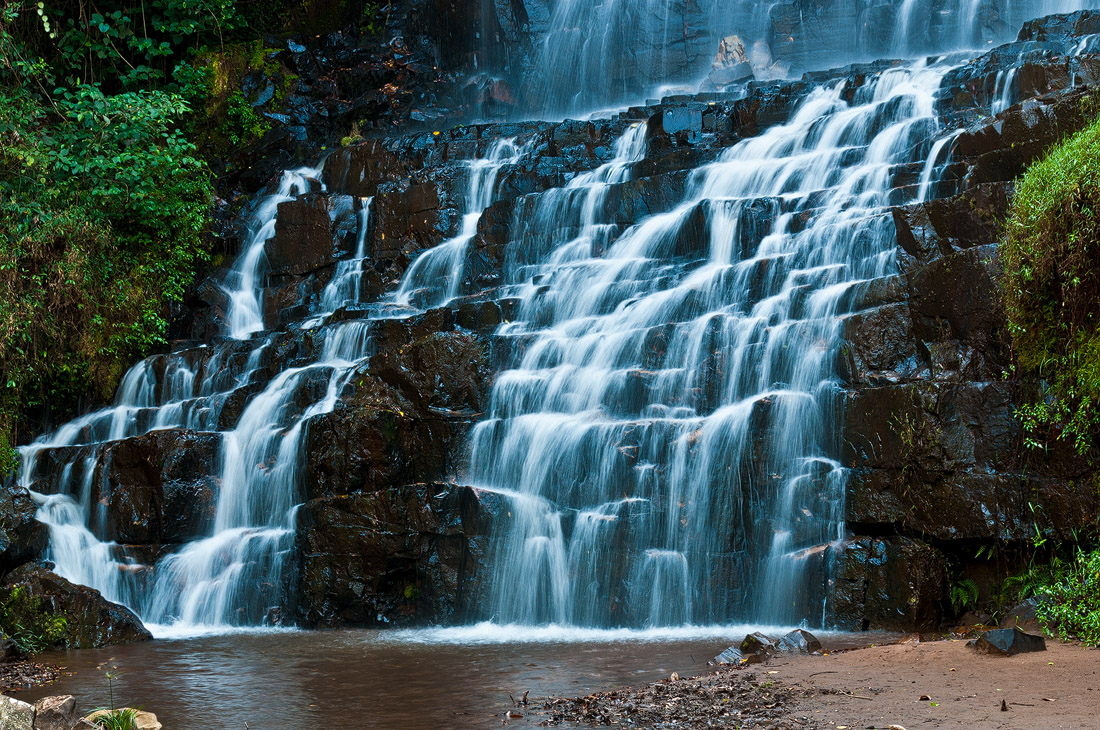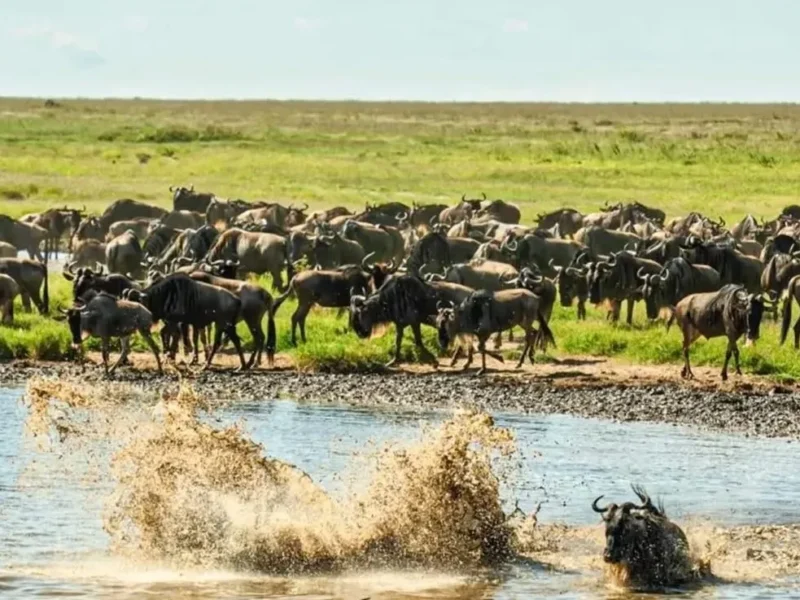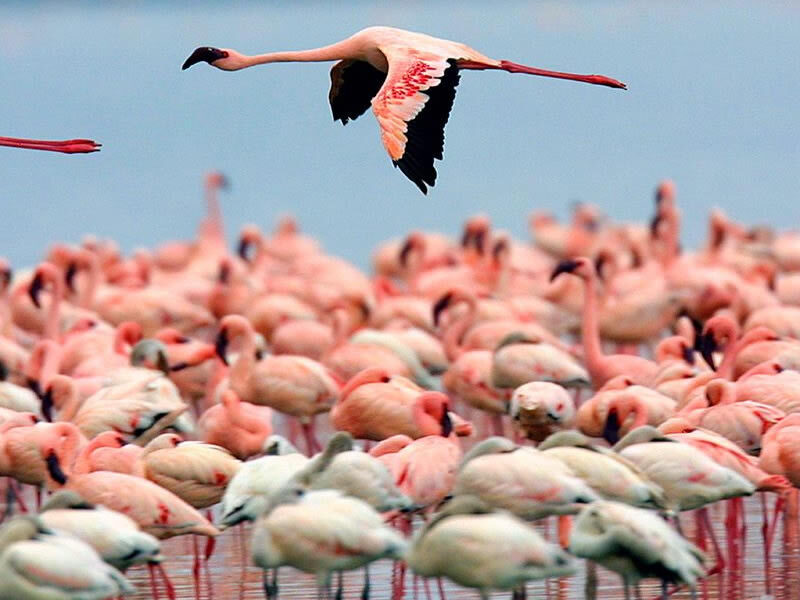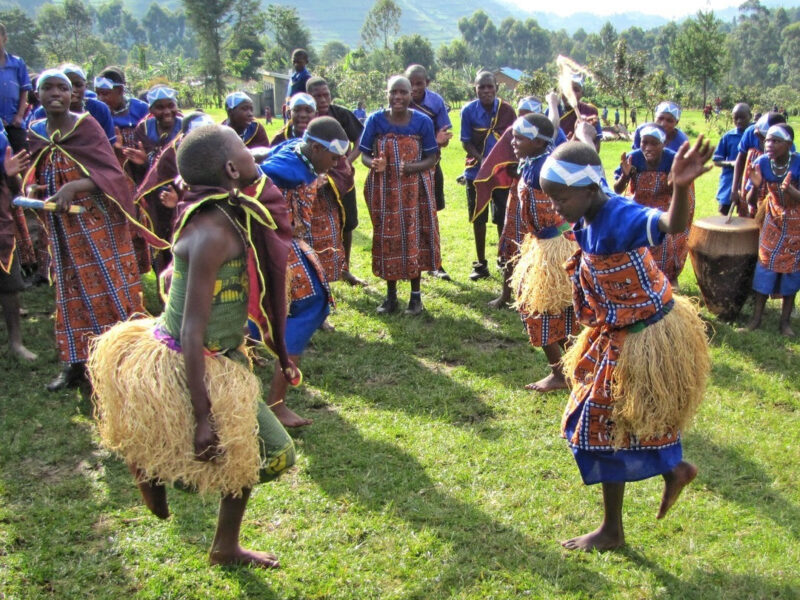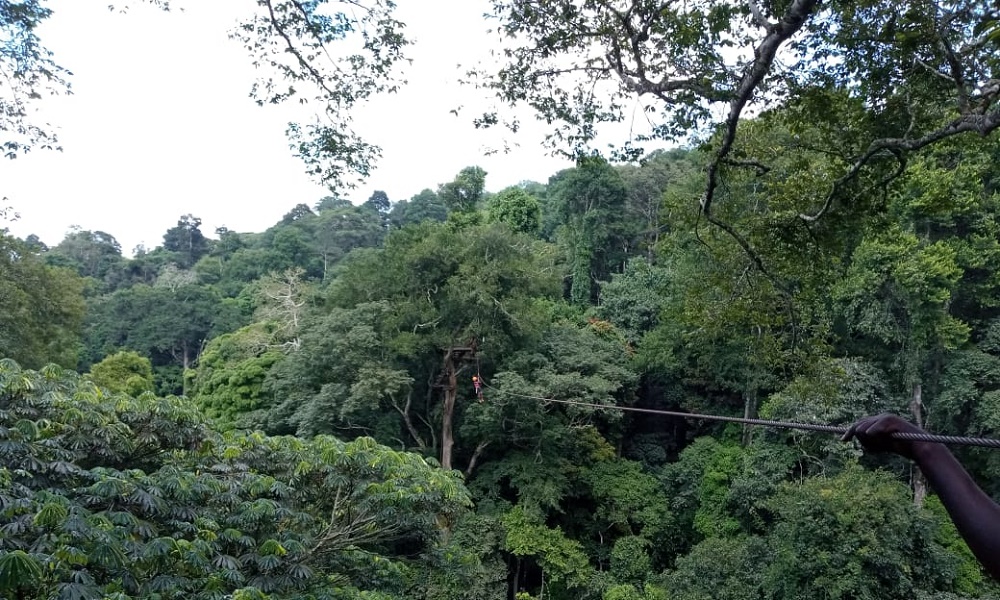
Zip, Hike, and Explore: Discover Mabira Forest
April 22, 2025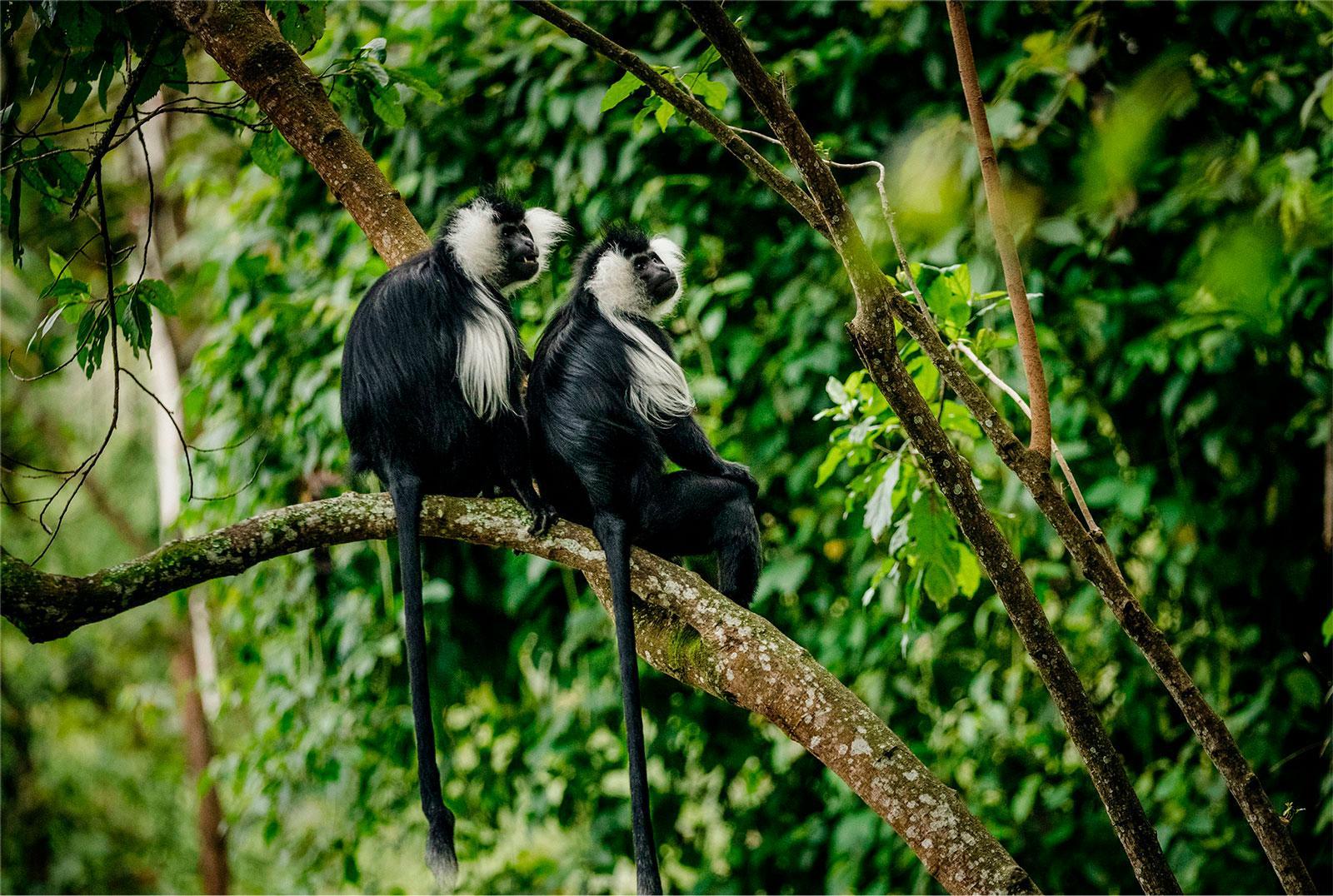
Discover the Untouched Wilderness of Kibira National Park
April 22, 2025Karera Waterfalls: A Hidden Gem in Southeastern Burundi
Nestled in the lush landscapes of Rutana Province, southeastern Burundi, the Karera Waterfalls (also known as Chutes de la Karera) are among the country’s most captivating natural wonders These tiered cascades offer a serene escape into nature, making them a must-visit for travelers seeking tranquility and adventure
Overview
Location
The Karera Waterfalls are located in Rutana Province, southeastern Burundi, approximately 60 km south of Rutana town, and near the small town of Musongati. They are accessible via road from Bujumbura or Gitega, though the final stretch may require a vehicle suitable for off-road terrain.
This location places the waterfalls in a remote, lush area that remains one of Burundi’s most beautiful natural escapes.
Height
The main waterfall in the Karera complex drops approximately 80 meters (about 260 feet), creating a dramatic cascade of water, especially during the rainy season. The waterfall system as a whole covers a large area — about 142 hectares — making it one of the largest and most impressive natural features in the country.
Structure
Karera Waterfalls is actually a system of multiple waterfalls, not just a single drop.
– It is fed by two rivers: the Karera River and the Mwaro River.
– The water flows over three major tiers, giving it a stepped appearance.
– There are six separate branches or streams of water within the waterfall system, which twist and tumble through rocks and dense vegetation.
This tiered structure creates natural pools and basins at various levels, which are popular for photography, swimming, and relaxation.
Natural Beauty
The Karera Waterfalls are surrounded by dense gallery forests, featuring towering trees like Neutonia buchanii, Parinari curatellifolia, and Pericopsis angolensi. This rich vegetation supports diverse bird species, enhancing the area’s biodiversity.
Activities & Attractions
Swimming
At the base of the waterfalls, you’ll find natural pools formed by the cascading streams of water. These pools are perfect for a refreshing swim, especially after a hike.
-The water is clear, cool, and surrounded by lush vegetation, offering a serene and picturesque environment.
-Swimming is most enjoyable during the dry season (June to September) when the water is calmer and more accessible.
-While swimming is allowed, it’s advisable to check water levels and currents with a guide, as safety measures are minimal.
Hiking
The area around Karera Waterfalls features multiple hiking trails that vary in length and difficulty.
-Trails lead to different levels of the waterfall system, allowing you to view the falls from various angles and heights.
-Some paths take you through dense forest areas, while others provide scenic overlooks with views of the Rutana hills and valleys.
– Guided hikes are available and recommended, as they offer insights into the local flora, fauna, and geology.
Wear good hiking shoes, bring water, and prepare for some uneven, rocky paths.
Canopy Walkway
A recent addition to the Karera Falls experience, the canopy walkway is a suspended bridge that allows visitors to walk above the forest and waterfalls.
– It offers breathtaking panoramic views of the waterfall tiers and surrounding forests.
– Ideal for photographers, nature lovers, and anyone looking for a bit of adrenaline mixed with awe-inspiring sights.
– The walkway is built with safety in mind, but visitors with a fear of heights should be cautious.
This feature is still relatively new and may only be available during certain seasons or with a guide.
Picnicking
Designated picnic areas are available within the park, providing visitors with a peaceful spot to rest and enjoy the environment.
– These areas are typically shaded and located near the trailheads or viewpoints.
– You can bring your own food or arrange for packed meals with local guides or nearby lodges.
– It’s a great way to relax and take in the natural beauty and sounds of the forest.
Reminder: Bring reusable containers and take all trash with you to preserve the environment.
Best Time to Visit
Dry Season (June to September) – Best Overall
-Ideal for hiking and sightseeing
-Trails are dry and safer to walk
-Easier road access (especially important for 4×4 vehicles)
-Waterfalls still have a good flow due to lingering seasonal rains
Perfect for outdoor activities like hiking, swimming, and picnicking without the disruption of heavy rainfall.
Rainy Season (October to January) – Most Scenic
-Waterfalls are at their most dramatic and full
-Lush green surroundings and vibrant flora
-Trails can be slippery and roads muddy
-Some areas may be inaccessible during peak rain
Great for photography and nature lovers, but less ideal for trekking unless you’re experienced and well-prepared.
Short Rain Season (March to May) – Quiet & Serene
-Forest and waterfalls are vibrant
-Fewer tourists = peaceful experience
– Some hiking paths may still be muddy
A good compromise if you’re okay with a little rain and want to avoid crowds.
Pro Tip:
Visit early in the morning to catch the falls in soft light, avoid heat, and see more birds and wildlife.
Getting there
To reach the Karera Waterfalls in southeastern Burundi, you’ll need to plan for a bit of adventure, as public transportation is limited. Here’s how you can get there:
By Car (Recommended)
-From Bujumbura (Bujumbura): Drive approximately 60 km southeast to the town of Musongati in Rutana Province from Musongati, follow the signs or local directions to the falls. The last part of the journey involves a rough gravel road, so a 4×4 or high-clearance vehicle is advisable
-From Gitega: Travel south towards the town of Mwaro from Mwaro, take a dirt road for about 4 km to reach the falls Be prepared for a bumpy ride, especially during the rainy season
Motorcycle Taxi (Moto)
If you’re in Gitega or Rutana, you can hire a motorcycle taxi to take you to the fall. The ride offers a more direct route and can be an exciting way to experience the local scenery. Ensure to negotiate the fare beforehand.
Visitor Information
-Entrance fee: A small fee is charged upon arrival, contributing to conservation efforts.
-Facilities: Basic amenities are available; visitors are encouraged to bring essentials like water, snacks, and appropriate footwear.
–Guides: Local guides are available to enhance the experience with insights into the area’s ecology and history.
Nearby Attractions
Absolutely! If you’re visiting Karera Waterfalls in southeastern Burundi, you’re in for more than just stunning cascades — the surrounding region offers several other unique and culturally rich attractions. Here are some not-to-miss nearby sights:
1.Source of the White Nile (Ruvyironza River)
-Location: Rutovu, Bururi Province – about 50 km from Karera
-Why Visit: This site is believed to be the southernmost source of the Nile River, marked by a monument erected in 1938.
-Experience: Surrounded by rolling hills, it’s a peaceful place for photos and history buffs curious about African exploration.
2.Nyakazu Fault (German Fault)
-Location: About 20–30 km from Karera Waterfalls, in the Kigwena region
-Why Visit: A dramatic natural fault line offering panoramic views of Burundi’s eastern escarpment.
-Experience: You can see deep gorges and cliffs, and it’s a popular stop for geologists and photographers.
3.Ruvubu National Park
-Location: Northeastern Burundi, several hours from Karera (a longer excursion)
-Why Visit: It’s the largest national park in Burundi, home to hippos, antelopes, buffaloes, monkeys, and over 200 bird species.
-Experience: Great for birdwatching and guided nature walks — though it’s a full-day trip or more from Karera.
4.Gihofi Hot Springs
-Location: Near Gihofi town, roughly 60–70 km from Karera
-Why Visit: These natural hot springs are known for their therapeutic properties.
-Experience: Locals and tourists alike visit to soak in the warm waters and relax after a long hike or tour.
5.Gishora Drum Sanctuary
-Location: Just outside Gitega, about 100 km from Karera
-Why Visit: A cultural heritage site where you can witness Burundi’s sacred royal drumming tradition.
-Experience: Performances by instore drummers, explore drum-making history, and experience Burundian music culture.
6.Kigwena Nature Reserve
-Location: South of Karera near Lake Tanganyika (Rumonge)
-Why Visit: A protected forest known for monkeys, birds, and tree species, making it a perfect add-on for eco-tourists.
-Experience: Guided Forest walks and wildlife spotting.
Bonus: If you’re headed toward Lake Tanganyika, you can also stop by:
-Blue Bay Resort or Tanganika Blue Lodge for lakeside relaxation
-Rumonge Nature Reserve to explore a tropical forest near the shoreline

